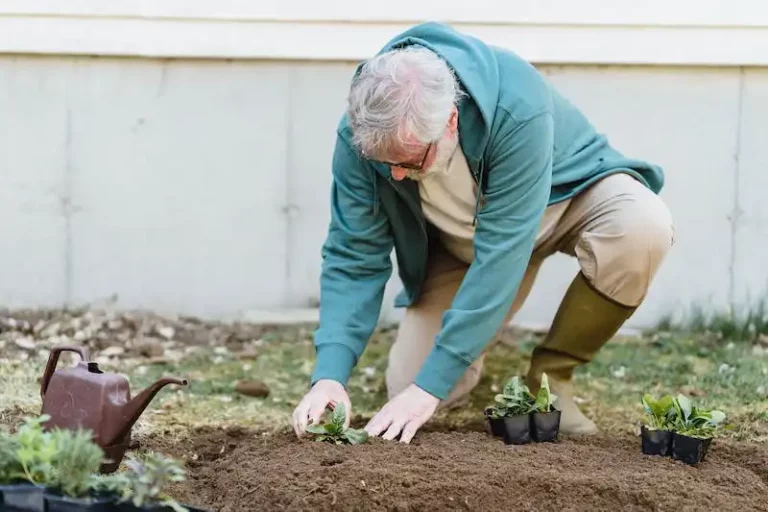A 403 ERROR is a type of HTTP status code that indicates that the server understands the request made by the client, but is refusing to fulfill it. This error message is often encountered when trying to access certain web pages or resources that require authentication or are forbidden to the user.
There are several reasons why a 403 ERROR may occur. One reason could be that the user does not have the necessary credentials or permissions to access the requested resource. Another reason could be that the server has been configured to block certain IP addresses or user agents.
It is important to note that a 403 ERROR is different from a 404 ERROR, which indicates that the requested resource could not be found. In the case of a 403 ERROR, the resource does exist, but the server is refusing to provide access to it.
Keeping Your Poinsettia Alive
Poinsettias are beautiful plants that can brighten up your home during the holiday season. However, they require some special care to stay healthy and continue blooming year after year. With the right maintenance and attention, you can achieve vibrant colors and keep your poinsettia looking its best.
First and foremost, it’s important to know that poinsettias are native to southern Mexico and Guatemala, where the temperatures are much warmer than most homes. To mimic their natural environment, you should keep your poinsettia in a place that receives bright, indirect sunlight. Avoid placing it near drafty doors or windows, as cold drafts can hurt the plant.
Watering is another crucial aspect of poinsettia care. While it’s important to keep the soil moist, be careful not to overwater. Allow the soil to dry out slightly between waterings, and always empty the drainage tray to prevent the roots from sitting in water. Thoroughly watering the plant and then allowing it to drain is the best way to ensure proper hydration.
In addition to water, poinsettias need darkness to trigger blooming. To achieve this, make sure to provide 12-14 hours of uninterrupted darkness every night for about 6-8 weeks leading up to the desired blooming date. This process can be achieved by placing the plant in a dark room or covering it with a box or opaque bag. During the day, the plant should receive bright, indirect sunlight as mentioned earlier.
When it comes to temperature tolerance, poinsettias prefer cool conditions. Ideally, the temperature should be between 60-70°F during the day and around 55°F at night. Avoid placing the plant near heating vents or appliances that generate heat, as excessive warmth can cause the leaves to drop.
Beyond these basic care steps, some horticulturists recommend fertilizing poinsettias with a balanced, water-soluble fertilizer during the spring and summer months. However, be cautious not to apply too much fertilizer, as it can harm the plant.
In conclusion, poinsettias can be a stunning addition to your home during the holidays and beyond. By following these care tips, you can keep your poinsettia alive and achieve beautiful, long-lasting blooms. Remember to provide the right amount of water, sunlight, darkness, and temperature, and your poinsettia will reward you with its vibrant colors for years to come.
How much light does my poinsettia plant need
When it comes to growing poinsettia plants, understanding their light requirements is key to keeping them alive and thriving. Poinsettias are native to Guatemala and are best known for their vibrant red and green foliage, which brighten up our homes during the holidays.
Like many houseplants, poinsettias need bright light to thrive. They prefer to be placed in an area that receives at least four to six hours of indirect sunlight each day. However, it’s important to note that poinsettias can tolerate low light conditions for a short period of time, but prolonged exposure to darkness can cause the plant to wilt and eventually die.
During the growing process, poinsettias go through a period of 403 error, which is the process of setting flower buds. This typically occurs in the fall when the nights become longer and the days get shorter. To achieve reblooming in your poinsettia plant, keeping them in complete darkness for about 14 to 16 hours a day starting in mid-December until the desired flowering date can help initiate this process.
When it comes to watering your poinsettia, it’s important to strike a balance. Over-watering can lead to root rot and under-watering can cause the plant to drop its leaves. It’s best to water the plant when the top inch of soil feels dry to the touch. Be careful not to let the plant sit in excess water, as this can also lead to root rot.
Poinsettias also require some basic maintenance to keep them looking their best. Removing any yellow or wilting leaves, as well as pinching the stem to promote branching, will help ensure a healthy and blooming plant. Caring for poinsettias during the spring and summer months includes regular watering, fertilizing with a balanced fertilizer, and ensuring they’re kept in a room with bright, indirect light.
It’s important to note that poinsettias are also prone to certain pests, such as whitefly. If you notice any signs of pest infestation, it’s important to take immediate action to prevent further damage to the plant. In addition, poinsettias can also cause skin irritation, so it’s important to handle them with care and wash your hands thoroughly after touching the plant.
In colder zones, poinsettias are often used as outdoor plants during the fall and Thanksgiving season to add festive colors to doorways and gardens. However, they are sensitive to colder temperatures and should be brought indoors once the temperatures drop below 50°F (10°C).
Lastly, it’s worth mentioning that dyed poinsettias, which are becoming more popular, require the same level of care as regular poinsettias. The dyes used to color the flowers do not affect their maintenance and care requirements.
In summary, poinsettias need bright, indirect light to thrive and they can tolerate low light conditions for a short period of time. Providing them with the right amount of water, attention to maintenance, and keeping them in the right conditions will help ensure their long-lasting beauty and vibrant colors during the holiday season.
When should I water my poinsettia
Poinsettias are popular plants during the holidays, known for their vibrant colors that brighten up the dark winter days. To keep your poinsettia alive and looking its best, proper care is essential. One important aspect of care is knowing when to water your poinsettia.
Watering poinsettias can be a bit tricky, as they have specific needs. The first thing to consider is the growing zone you are in. Poinsettias thrive in zones 9-11, where the temperature remains above freezing. If you live in a colder zone, you can still grow poinsettias indoors with proper care.
The key point to remember is that poinsettias don’t like to be overwatered, nor do they like to be kept too dry. So, when should you water your poinsettia? Well, it depends on a few factors.
During the holiday season, when poinsettias are in full bloom, they will likely need more water to keep their vibrant color and stay alive. Start by checking the soil moisture level. If the top inch of soil feels dry to the touch, it’s time to water. Be careful not to overwater – poinsettias prefer to be slightly dry rather than sitting in water.
If you have recently purchased a poinsettia and it is still in its foil wrapper, remove the wrapper before watering to ensure proper drainage. Water the plant thoroughly until the excess water drains out of the bottom of the pot.
Once the holiday season is over and the poinsettia starts to fade, you can reduce the frequency of watering. Aim to water the plant only when the soil feels dry to the touch. Avoid letting the plant sit in standing water, as this can lead to root rot and the decline of the plant.
In late December or early January, you can begin the process of reblooming your poinsettia. To do this, follow these steps:
- Move the poinsettia to a dark place, such as a closet or a room with no artificial light, for about 14 to 16 hours each night. This darkness signals the plant to begin the reblooming process.
- During the day, move the poinsettia to a bright location where it can receive at least 6 hours of indirect sunlight.
- Continue this routine for about 8 to 10 weeks, or until the poinsettia starts to show colored bracts again.
- Once you see new colored bracts forming, you can bring the poinsettia back to its regular location and resume normal care.
It’s important to note that achieving reblooming success with poinsettias can be challenging. If you are unsure or don’t have the time and patience to follow the required steps, it’s best to enjoy poinsettias as seasonal plants and discard them after they start to fade.
Finally, as with any plant, proper fertilizer and care will help your poinsettia thrive. Consult a horticulturist or follow the instructions on a poinsettia-specific fertilizer to ensure you are providing the ideal nutrients for your plant.
By following these care tips, you can keep your poinsettia alive, delay leaf drop, and enjoy its colorful beauty for as long as possible. Poinsettias are native to Guatemala and were introduced to the American continent in the 19th century. They are frost-sensitive plants but can still grow in colder zones when brought indoors.
What room temperature is right for my poinsettia
When it comes to caring for a poinsettia, one of the most important factors to consider is the room temperature. Poinsettias are native to the subtropical climate of Guatemala and thrive in warm conditions. However, they can also tolerate cooler temperatures as long as they are not exposed to frost.
During the holiday season, poinsettias are often used to brighten up homes and displays. To keep them alive and healthy throughout the holidays and beyond, it’s important to provide the right temperature and care.
Poinsettias prefer a room temperature between 65°F and 75°F (18°C and 24°C). They can tolerate cooler temperatures down to 50°F (10°C) for short periods, but prolonged exposure to cold temperatures can damage the plant and cause leaf drop. On the other hand, temperatures above 75°F (24°C) can cause the plant to wilt and die.
It’s also important to place your poinsettia in a spot where it can receive bright, indirect sunlight. Poinsettias do best in a bright location with no direct sun, such as near a north-facing window. If the plant is not receiving enough light, it may become leggy and the colorful bracts may fade.
When it comes to watering, poinsettias should be thoroughly watered whenever the top inch of soil feels dry to the touch. They do not like to sit in water, so be sure to allow excess water to drain away. Overwatering can lead to root rot and the death of the plant.
If you want your poinsettia to rebloom next year, you can follow a few steps after the holidays. In mid-December, decrease the amount of daylight the plant receives by keeping it in a dark room for at least 12-14 hours a day. During the day, move it to a bright spot. This period of darkness will trigger the plant to produce flowers again.
It’s important to note that poinsettias are considered to be mildly toxic and can cause irritation if ingested. Keeping them out of reach of children and pets is recommended.
By providing the right temperature, light, and care, you can ensure that your poinsettia stays alive and vibrant throughout the holiday season and beyond.




